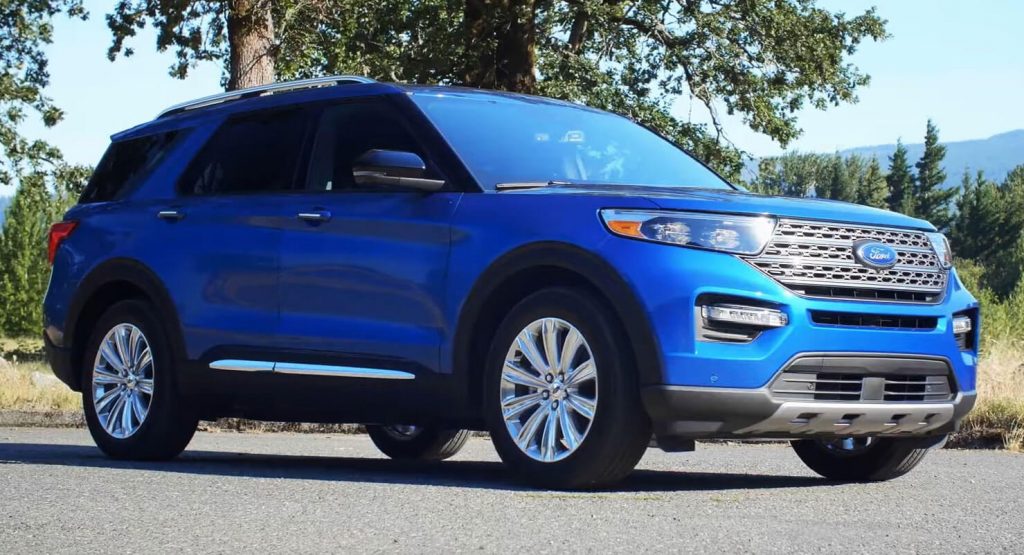For the 2020MY, the Ford Explorer has went down hybrid lane. The large SUV now packs an electrified 3.3-liter, naturally aspirated V6 that puts out 318 hp and 322 lb-ft (437 Nm) of torque.
With ITS 35 kWh lithium-ion battery fully charged, it has a driving range of over 500 miles (805 km) between fill ups in the base rear-wheel version (all-wheel drive is an option).
The 10-speed automatic transmission that connects the assembly to the running gear clearly impressed RoadShow’s reviewer, who found shifting between very smooth and almost unnoticeable, while it can also skip gears when needed. There is a downside to that, though, as downshifting isn’t as refined – but hey, you can’t have them all, right?
Also Read: How Does The 2020 Ford Explorer Compare Against Its Predecessor?
The positioning of the battery underneath the second-row seats hasn’t impacted the interior space or cargo capacity. Thus, the hybrid SUV has the same interior dimensions and boot space as the non-hybridized Explorers. Towing capacity has gone down a bit, from the 2.3-liter EcoBoost’s 5,300 lbs (2,404 kg) and 3.0-liter V6’s 5,600 lbs (2,540 kg), to 5,000 lbs (2,268 kg).
Now, like practically all modern SUVs, this one is meant to spend all its life in good old tarmac, facing the occasional rain and slew, but not veer off the beaten track, right? As it turns out, you can. Don’t get us wrong, you won’t be able to explore (pun intended) very steep slopes and cross deep rivers; this is no Defender, but it’s more than capable to get you to that cabin in the woods, or, in case of the reviewer, across an off-road course in Oregon.
There’s one sticking point, though: the price. At $48,130 MSRP (without AWD), it gets too close for comfort to the 2019 Expedition, which can be had from $52,130. But that’s comparing apples to oranges, and it’s down to each prospective buyer to decide what their priorities are.



